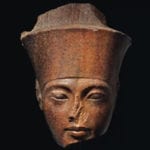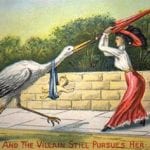 History
History  History
History  Movies and TV
Movies and TV 10 Unconventional Ways Famous Actors Got into Character
 Weird Stuff
Weird Stuff 10 Bizarre & Heartbreaking Stories Straight from the Restroom
 Miscellaneous
Miscellaneous 10 Restaurants Busted for Selling Drugs
 Politics
Politics 10 U.S. Policies That Were Passed Based on False Information
 Technology
Technology 10 Ingenious Tech Experiments That Think Outside the Box
 Weird Stuff
Weird Stuff 10 Facts about Britain’s P.T. Barnum Including His Disturbing Death
 History
History 10 Stories That Use Historical Events as Backdrops
 Health
Health 10 Major Recent Advances in Medicine
 Miscellaneous
Miscellaneous Ten Incredibly Strange Inspirations for Celebrity Names
 History
History 10 Mind-Blowing Facts from History That Don’t Seem Real
 Movies and TV
Movies and TV 10 Unconventional Ways Famous Actors Got into Character
 Weird Stuff
Weird Stuff 10 Bizarre & Heartbreaking Stories Straight from the Restroom
Who's Behind Listverse?

Jamie Frater
Head Editor
Jamie founded Listverse due to an insatiable desire to share fascinating, obscure, and bizarre facts. He has been a guest speaker on numerous national radio and television stations and is a five time published author.
More About Us Miscellaneous
Miscellaneous 10 Restaurants Busted for Selling Drugs
 Politics
Politics 10 U.S. Policies That Were Passed Based on False Information
 Technology
Technology 10 Ingenious Tech Experiments That Think Outside the Box
 Weird Stuff
Weird Stuff 10 Facts about Britain’s P.T. Barnum Including His Disturbing Death
 History
History 10 Stories That Use Historical Events as Backdrops
 Health
Health 10 Major Recent Advances in Medicine
 Miscellaneous
Miscellaneous Ten Incredibly Strange Inspirations for Celebrity Names
10 Controversial Pictures
The official definition of a controversy is an issue that involves a prolonged public dispute or debate. Controversies usually concern a matter of opinion and can involve a wide variety of topics including world history, religion, philosophy, politics, economics, science, finances, age, gender, and race. In some areas of the world controversial issues are said to be disruptive to society and are not discussed in public. In other cultures, people feel it is their duty to examine all areas of a subject and discuss it in a civilized manner.
Since the invention of the camera, hundreds of controversial pictures have been taken. This article will examine 10 images that have raised concern in the media and caused debate across the internet. The list is not attempting to display the top ten controversial photographs in history, but will examine a collection of pictures that have not been featured in similar articles. In any case, I would like to hear your opinion on the most controversial images in history.
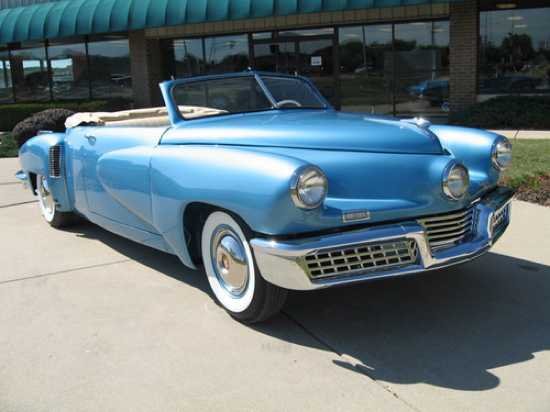
The 1948 Tucker sedan is an advanced automobile that was developed by Preston Tucker and produced in 1948. According to records, only 51 Tucker sedans were made before the business folded. The vehicle’s design was innovative for the 1940s and was built for safety. The Tucker was the first car to feature seat belts, safety glass windshields, and the Cyclops, which was a headlight system that shifted directions to increase visibility for night driving. In 1949, the Tucker Corporation was ridiculed by the American media and experienced a consumer backlash. The company was shut down amidst a scandal of controversial accusations around stock fraud. In 2011, a 1948 Tucker sedan was featured on the show It’s Worth What? and received an estimated value of $1,200,000.
Justin Cole is a man that runs Benchmark Classics in Middleton, Wisconsin. He claims to own the only unfinished prototype of a Tucker convertible. The authenticity of the vehicle has been questioned by classic car collectors from all over the world. Legend holds that the convertible was a secret, off-the-books prototype known as “Project Vera,” developed by Preston Tucker and named after his wife. However, Alex Tremulis, who designed the Tucker sedan, has claimed that the convertible was not a factory project, official or unofficial. Justin Cole refers to his convertible as Tucker #57 and says the factory number of 57 is stamped on the body panels.
In 2010, Justin Cole attempted to sell the Tucker convertible at the Russo and Steele auction in Scottsdale. The bidding reached a price of $1.4 million, but didn’t meet the reserve price. The car was also listed on ebay in 2010, where bidding approached $900,000, but once again didn’t meet the reserve. The vehicle is still listed for sale on Benchmark’s website and has a large gallery of photographs. The car holds a clear Tucker design and clean convertible conversion. The position of the Tucker Automobile Club of America is that the vehicle was converted after the company went out of business.
If you’re in the mood for more controversy, try Nutrition: Concepts and Controversies at Amazon.com!

Girls’ Generation is a nine-member South Korean pop girl group formed in 2007. They are currently the top selling Korean girl band in the world. In the summer of 2009, the group took part in a controversial photo shoot with a military theme. One of the pictures from the shoot was selected for the band’s mini-album cover Sowoneul Malhaebwa (Genie). Soon after the album’s release, controversy erupted over the cover. In the picture, a plane can be seen which many people felt was a direct replica of Japan’s A6M Zero fighter plane, which was used by the Imperial Japanese Navy Air Service in World War II. People also noticed that the military outfits, medals, and hats worn by the girls resemble that of the Third Reich.
In one example, the eagle emblem used on the girls’ hats greatly resembles the Nazi Party emblem. In response to the accusations, SM Entertainment stated: “We used military icons on the album cover, but it was interpreted and understood in a way we didn’t expect, so we are planning to delete it and put an icon of the South Korean supersonic jet T-50.” In the future, Girls’ Generation should be more careful about using images that were taken from Nazi and Kamikaze insignia. Regardless of the controversy, Sowoneul Malhaebwa (Genie) reached #1 less than 24 hours after it release.
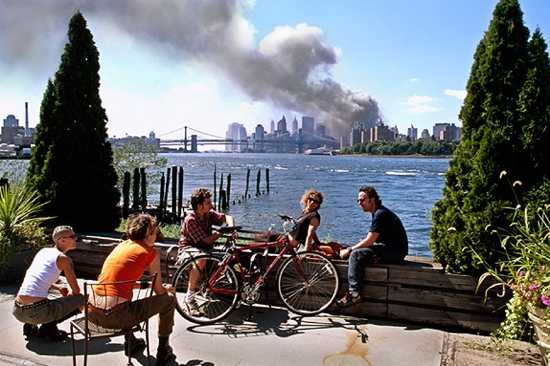
Thomas Hoepker is a German born photographer and member of Magnum Photos. On September 11, 2001, Hoepker was in New York when the World Trade Center was attacked. Hoepker captured hundreds of photos of the destruction, but one stands out. The photograph shows a collection of Americans relaxing and enjoying a conversation while the Twin Towers burn in the background. Hoepker did not publish the image for five years because he was concerned with the message. In 2006, the picture caused controversy in the American media. The New York Times published an article claiming the picture showed America’s failure to learn from the tragic day, or to change and reform as a nation.
“The young people in Mr. Hoepker’s photo aren’t necessarily callous (insensitive). They’re just American.” This is a country that likes to move on, and fast. The people in the picture have responded to the media by saying that they were in “a profound state of shock and disbelief.” They have ridiculed Hoepker saying that he took the picture without permission and in a way that misrepresented their feelings. Whatever the case, the photo is established as one of the defining images of 9/11 and remains controversial in the eyes of many people.
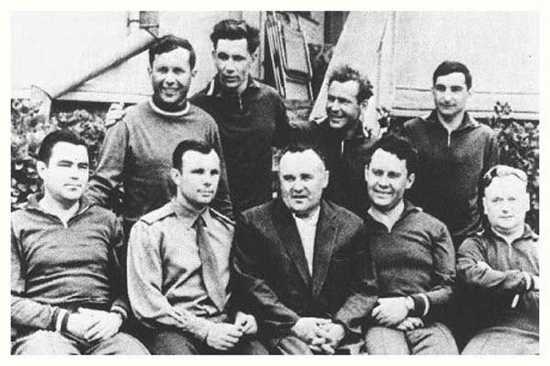
At the end of World War II, the United States and Soviet Union captured a large collection of German secrets, including information on a German rocket program. The technology sparked the Space Race (1957-1975) between the United States and the Soviet Union. In each country, a select group of individuals were chosen as the first astronauts. In most cases, these people were kept secret from the public. A good example is the Russian born astronaut Grigori Nelyubov. Little is known about Nelyubov, but he was likely the third or fourth person to travel into space before his dismissal from the Soviet space program in April, 1963, for disorderly conduct. Following his dismissal, all information regarding Nelyubov’s life was stricken from the Soviet record.
Grigori Nelyubov’s image was removed from a collection of famous photographs, including the Sochi Six picture, which shows the top members of the original class of Soviet cosmonauts. This airbrushing has led to a large collection of conspiracy theories regarding lost cosmonauts and unreported space flight. In 1966, Nelyubov committed suicide. From 1961 to 1972, at least eight former Russian cosmonauts are known to have died. The Sochi Six picture was officially released in the 1970s and the deception was only discovered after Russian news managers lost track of which versions of the picture they had already published. The fakery has caused some to label the Soviet Union’s string of space triumphs over the United States in the 1950s and early 1960s as a series of falsifications. I have included the original Sochi Six photograph before Nelyubov was removed. He is the tallest man in the picture.
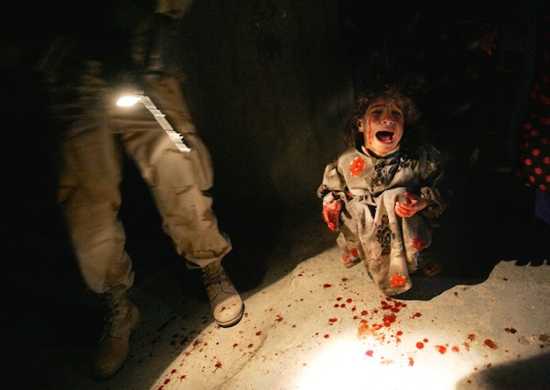
Chris Hondros was an American Pulitzer Prize-nominated war photographer. In 2005, he traveled to Iraq in order to cover the war. On January 18, 2005, Hondros was in Tal Afar when he witnessed a car that failed to stop at a U.S. checkpoint. U.S. Soldiers feared a suicide bomber and opened fire on the car killing both parents and injuring one of their five children. Hondros approached the scene and captured a picture of 5-year-old Samar Hassan splattered in her parent’s blood. After the photo was published, it quickly caused controversy and was spread across the world. Many feel the picture is the most iconic image of the Iraq War, similar to the naked Vietnamese girl screaming and running after a napalm attack. The Iraq War delivered few singular images, partly because it was too dangerous for photographers. The U.S. military also set strict rules for journalists.
In 2011, Samar Hassan looked at the picture for first time and was interviewed by the New York Times Middle East. About the incident she said that her family was in the car because her brother was sick and that they were returning from the hospital. In 2011, Samar was living on the outskirts of Mosul in a two-story house with four other families, mostly relatives. Chris Hondros was quoted about the once in a lifetime photograph: “Almost every soldier in Iraq has been involved in some sort of incident like that or another, I would say. Their attitude about it was grim, but it wasn’t the end of their world.” It was reported on April 20, 2011, that Chris Hondros and photojournalist Tim Hetherington were killed by a mortar attack in Misrata while covering the 2011 Libyan civil war.

Mary Ann Moorman was a witness to the assassination of U.S. President John F. Kennedy. She is best known for her photograph that shows JFK a fraction of a second after being shot in the head. During the event, Moorman was standing directly across from the grassy knoll, about 15 feet (5 m) from the presidential limousine. Her photograph was taken approximately one sixth of a second after the bullet’s impact. The image has caused controversy. Some claim to have identified as many as four different figures on the grassy knoll. With the most well known figure being a uniformed police officer named the “badge man.” Others claim to see Gordon Arnold or a man in a construction hard hat. People also point to the light color observed over the wall (left side), which looks like photo doctoring.
The story of Gordon Arnold is an interesting one. In 1978, Gordon claimed that before the assassination he was twice approached by a business-suited CIA or Secret Service agent who demanded that he move from behind the picket fence of the Dealey Plaza grassy knoll. Arnold claimed that he moved just south of the picket fence and filmed the assassination with a movie camera. During the event, a bullet passed extremely close to his left ear and in response Gordon hit the ground. He was then approached by an armed officer dressed in a Dallas police uniform. The man kicked Arnold while on the ground and demanded the movie film. Another man was armed with a rifle and dressed in a Dallas police uniform. He was wearing yellow lens tinted “shooter’s glasses” and stood close by crying, shaking, and waving his rifle around.
The Moorman picture has been digitally enhanced for television documentaries. In the photo, blood and brain fragments can be seen exploding forward, which contradicts the theory that the shot came from the front. Moorman’s original photograph was never confiscated by the FBI and in 2008 she sold it on ebay for $175,000. On the contrary, a second picture taken by Mary Moorman that shows the sixth-floor window of the Texas School Book Depository moments before the assassination was lost. The picture was confiscated by the FBI and never published. It probably shows Lee Harvey Oswald or anyone who may have been shooting at the President’s car. Another interesting photograph was taken by Phillip Willis (number 5) seconds before the fatal head shot. Willis said he took the picture after being startled by a gunshot, possibly the first shot. In Willis’ photograph, the grassy knoll can be seen and some have identified the “black dog man.”
Join the conspiracy! Buy Who Really Killed Kennedy?: 50 Years Later: Stunning New Revelations About the JFK Assassination at Amazon.com!
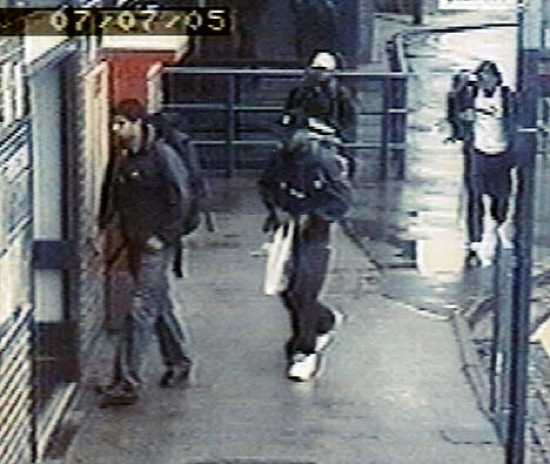
On the morning of July 7, 2005, four Islamist home-grown terrorists exploded a series of bombs in quick succession aboard London Underground trains. In all, 52 people were killed in the attacks. The bombers (all deceased) were identified as Mohammad Sidique Khan, Shehzad Tanweer, Germaine Lindsay, and Hasib Hussain. The group was recorded by CCTV cameras entering Luton station on 7/7. On September 1, 2005, it was reported that al-Qaeda officially claimed responsibility for the attacks. However, an official inquiry by the British government indicated that the tape claiming responsibility had been edited after July 7, and that the bombers did not have direct assistance from al-Qaeda.
The lack of facts surrounding the case and its unusual timeline has led to a collection of conspiracy theories. Some newspaper editorials in Iran have blamed the bombing on British or American authorities seeking to further justify the War on Terror, and have claimed that the plan involved the harassment of Muslims in Europe. There have also been theories proposed about the attackers, including the suggestion that they were patsies. One of the theories is centered on a picture that was taken at Luton station. After researching the photo, a large collection of people have called it fake.
Some of the problems with the picture include a number of inconsistencies with the railing in the back of the image. The railing appears to be moved over the man’s arm and its crossbars do not line up. The person featured in the right side of the picture has no clear face and a skinny left leg. The entire picture is developed with extremely poor quality and three of the terrorist’s faces are unidentifiable. The photo is the only image taken of the four bombers together on 7/7. Controversially, no other CCTV images, either still or moving have ever been released. In an interesting twist, the photo is timed at four seconds before 7.22 am, which would have given the men only three minutes to walk up the stairs at Luton, buy their tickets, and move to the platform.
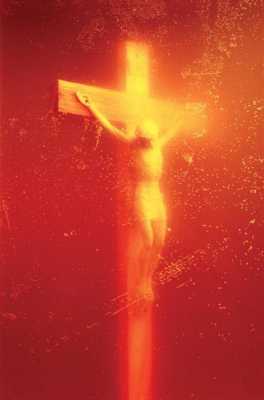
Andres Serrano is an American photographer who has become notorious for using feces, corpses, and bodily fluids in his work. Serrano was raised in a strict Roman Catholic family and is half Honduran, half Afro-Cuban. In 1987, he created a photograph titled Piss Christ. The image depicts a small plastic crucifix submerged in a glass of the artist’s urine. The photograph was part of a series of pictures that show classical statuettes submerged in various fluids, including milk, blood, and urine. Serrano received $15,000 for the picture, which was provided by the United States sponsored National Endowment for the Arts. In 1989, the image was displayed for the first time and the event caused a massive scandal. People became outraged over the picture and it was alleged that the U.S. government funding of Piss Christ violated separation of church and state.
Andres Serrano received death threats over the controversy and lost public grants. He responded by saying that the picture was not intended to denounce religion, but alludes to a perceived commercializing or cheapening of Christian icons in contemporary culture. Supporters of the picture have argued that it is an issue of freedom of speech. On the contrary, others feel it is their duty to destroy the image if displayed in a museum. In 1997, a retrospective of Serrano’s work was featured at the National Gallery of Victoria in Melbourne. During the show, two teenagers attacked Piss Christ with a hammer. On April 17, 2011, a print of Piss Christ was vandalized “beyond repair” by Christian protesters while on display in Avignon, France.
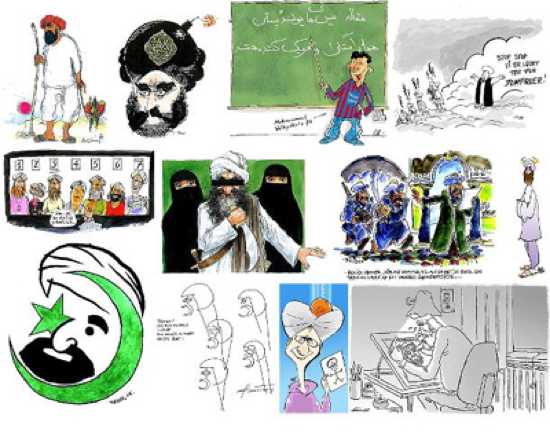
This entry is not a specific photograph, but rather the overall depiction of Muhammad. On September 30, 2005, the Danish newspaper Jyllands-Posten published 12 editorial (political) cartoons that depicted the Islamic prophet Muhammad in various situations. The headline of the cartoons read: “Muhammeds ansigt” (The face of Muhammad). The cartoons were drawn by 12 professional cartoonists in Denmark, most of who regularly worked for the newspaper. After the cartoons were published, Islamic protests erupted across the Muslim world with more than 100 reported deaths. The Danish embassy in Pakistan was bombed and embassies in Syria, Lebanon, and Iran were fire bombed. Muslims stormed European buildings and burned the Danish, Dutch, Norwegian, French, and German flags in Gaza City.
The newspaper announced that the cartoons were an attempt to contribute to the debate regarding criticism of Islam and self-censorship. Further examples of the drawings were reprinted in newspapers in more than 50 countries, which further deepened the controversy. Critics of the cartoons have described them as racist and hurtful to the Muslim faith. Supporters claim the cartoons illustrate an important issue of terrorism and are a legitimate exercise of free speech. Many people in the Western world feel that Muslims were not targeted in a way different from other religions, since unflattering cartoons about Jesus and Gautama Buddha are often published.
The entire issue was covered in two separate episodes of South Park, which is notorious for depictions of Jesus. Apparently, Comedy Central has been hesitant to allow images of Muhammad to be shown on the network since the riots and threats generated from the controversial cartoons. After Muhammad was heavily featured in the South Park episode 200, creators Trey Parker and Matt Stone received death threats from the Revolution Muslim organization. Danish Prime Minister Anders Fogh Rasmussen has described the Muhammad cartoon controversy as Denmark’s worst international crisis since World War II.

The full image will not be included, only a cropped version. Garry Gross was an American fashion photographer who specialized in dog portraiture. In 1975, he took a collection of pictures that would become the most controversial in history. The photographs show a ten-year-old Brooke Shields nude. She is standing and sitting in a bathtub, wearing makeup, and covered in oil. The pictures were taken with the consent of her mother, Teri Shields. At the time, Garry Gross was working on a project titled The Woman in the Child, in which he wanted to reveal the femininity of prepubescent girls by comparing them to adult women. The series was first published in the magazine Little Women, and then in Sugar and Spice, which is a Playboy Press publication.
In 1981, Brooke Shields attempted to prevent further use of the photographs, but a U.S. Court ruled that she was bound by the terms of the contract and more surprisingly that the images did not breach child pornography laws. In 1992, American artist Richard Prince, who is famous for his reproduction work, purchased the rights to the pictures. He recreated the picture and called it “Spiritual America.” In 1999, Prince’s version sold for $151,000. Three years ago the print was removed from the Tate Modern gallery in London, England. In response Gary Gross said: “The photo has been infamous from the day I took it as I intended it to be.” He was disappointed by the removal, but not surprised by the Tate’s decision. In 2002, a similar controversy erupted in London over a picture taken by Swiss artist Annelies Strba.





